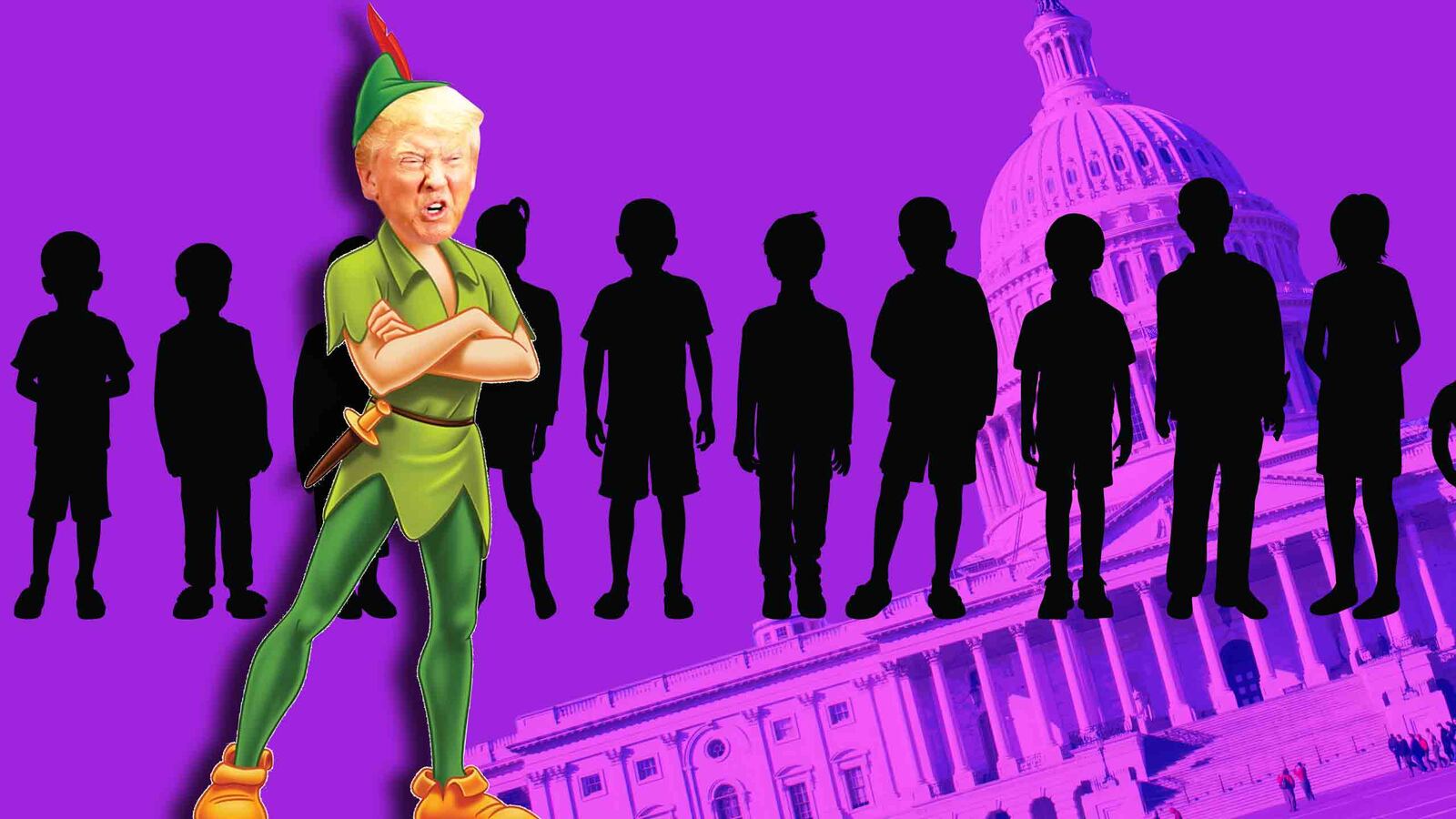With his decision to sign an executive order ending the separation of migrant families at the border, President Trump has—for the moment—stopped a horror of his own making. But the president’s work has just begun. His next step is to undo, as much as possible, the damage caused by his “zero tolerance” policy for asylum seekers who have crossed the border illegally.
To date, the president has largely played the role of an evil Peter Pan in turning thousands of migrant children into lost boys and girls, but if he wants to understand how he should conduct himself in the coming weeks, he has a precedent in the example set by President Ronald Reagan.
Thirty year ago, with grace and eloquence, Reagan signed into law a bill providing restitution for 120,000 Americans of Japanese descent who were interned in World War II under Executive Order 9066 that President Franklin Roosevelt signed on February 19, 1942 and the Supreme Court sanctioned in its infamous 1944 Korematsu decision, which Chief Justice John Roberts Jr. officially overruled this week, speaking for a 5-4 majority in upholding President Trump’s travel ban in Trump v. Hawaii.
Reagan did not allow himself to be imprisoned by his own conservative politics. In a ceremony that featured California’s Democratic Congressman Norman Mineta, who was 10 years old when his family was interned, Reagan declared, “We gather here today to right a grave wrong.” But as Reagan acknowledged, no ceremony and no amount of restitution could make up for the years lost to internment. All the country could really do was apologize and admit a wrong.
Nobody expects President Trump to apologize for the family separations he has caused. His is the post-empathy presidency. The historic link between what was done in World War II to Americans of Japanese descent and current border policy was drawn publicly by former first lady Laura Bush, not the president or the current first lady.
But there are steps the president can take to mitigate the harm he has done. He is not helpless if he ignores his own rhetoric. He can begin the process of uniting with their parents as rapidly as possible the 2,300 children taken from their families under his orders. (Supplying families and children with cell phones would be an easy start.) He can let reporters and photographers into the centers where migrant children are currently held so that there is a public record of their treatment, and he can provide extra staffing at legal ports of entry so that migrant families seeking asylum and trying to obey the law are accommodated.
Two years after President Reagan made his apology to the Americans of Japanese descent who had been interned during World War II, a memorial to them and to the Japanese-American veterans who had fought in the American military during World War II was dedicated in Washington, D.C. at the corner of Louisiana Avenue and D Street. Designed by the architect Davis Buckley, the memorial features a bronze sculpture, Golden Cranes, by Nina Akamu that consists of two cranes caught in barbed wire.
How we will remember the current migrant families who have experienced government-enforced separation is unclear. Chain-link fences rather than barbed wire are the symbols of their suffering, but rather than think about memorials to them, we have time to act before their plight becomes still worse.






